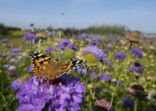Investors have a growing opportunity to participate in protecting biodiversity and stemming the crisis that is accelerating in relation to climate change.
The oceans, forests, agricultural land and climate – as well as the plants and animals they support – are examples of the ‘natural capital’ at the heart of this, and which are under threat.
“We believe solutions are now emerging which offer investors the ability to start integrating biodiversity into core portfolio decision-making,” said Liudmila Strakodonskaya, responsible investment analyst at Axa Investment Managers (IM).
The urgency is also increasing given trends such as population growth that will require more food, fibre and timber. Investment to make farmland and timberland more productive and sustainable, for instance, is essential.
“We believe investors can and should address biodiversity risks in their portfolios, in pursuit of genuinely sustainable economies,” added Strakodonskaya. “We can sometimes lose sight of how reliant our economies are on biodiversity’s careful preservation.”
Building biodiversity momentum
Various initiatives are underway, and gaining traction, to help investors pursue their objectives.
For example, the momentum will amplify this year as the pandemic-delayed United Nations Conference of the Parties on biodiversity (COP15) takes place in China.
“We have already seen the initial publication of the Taskforce on Nature-related Financial Disclosures’ (TNFD) Beta framework, regarding biodiversity-related financial disclosure, and we will also see developments from the Science-based Targets Network (SBTN) on biodiversity target-setting by corporates in the near future,” said Strakodonskaya.
In addition, one of the key investor-led organisations in the marketplace – the Finance for Biodiversity (FfB) foundation – plans to issue guidance on approaches by financial institutions in 2022.
“Biodiversity loss is a systemic risk, tied inextricably to climate change and yet sometimes overlooked in the push for net zero emissions,” added Strakodonskaya.
“We think the moment has arrived for investors to understand how they can be part of the solution, to assess how biodiversity risks might affect their investments, and to ensure they are not left behind.”
Targeting new goals
Tackling the biodiversity crisis is a challenging ambition for the investment community, especially given the difficulty in managing what people cannot measure.
Further, in biodiversity research, data and reliable analytical tools have been difficult to come by until recently.
“Our goal should be to identify how each economic activity can damage biodiversity, and to find solutions which can mitigate these negative impacts. Ultimately, we have the opportunity to build new ‘nature-positive’ economic models,” explained Strakodonskaya.
















